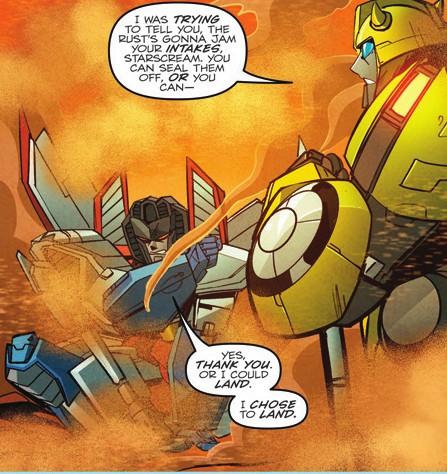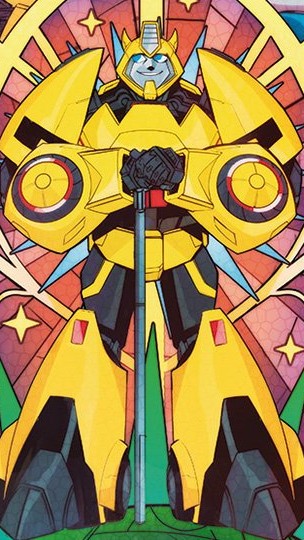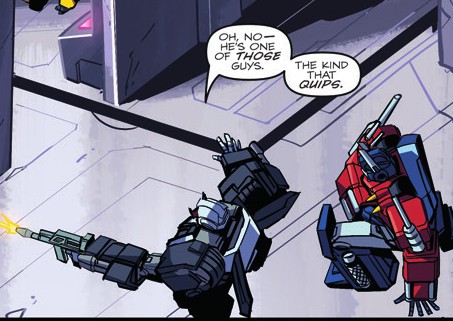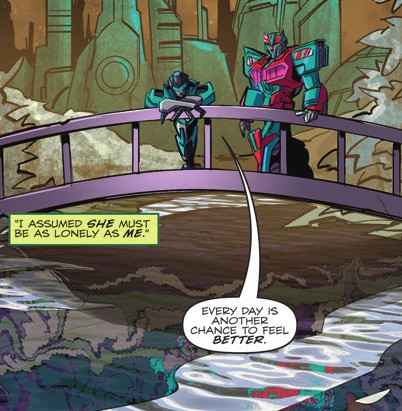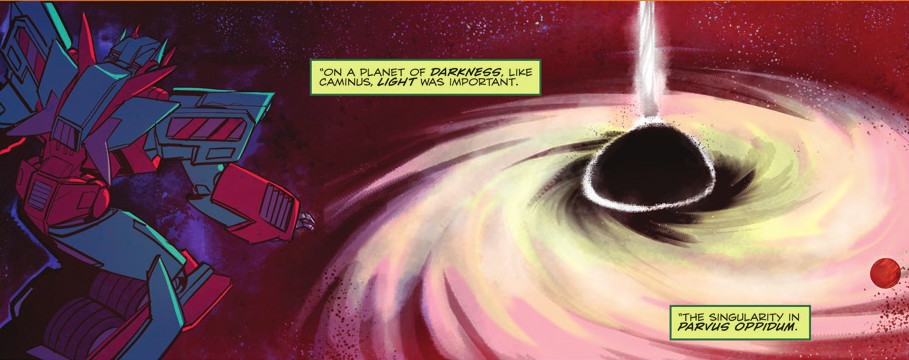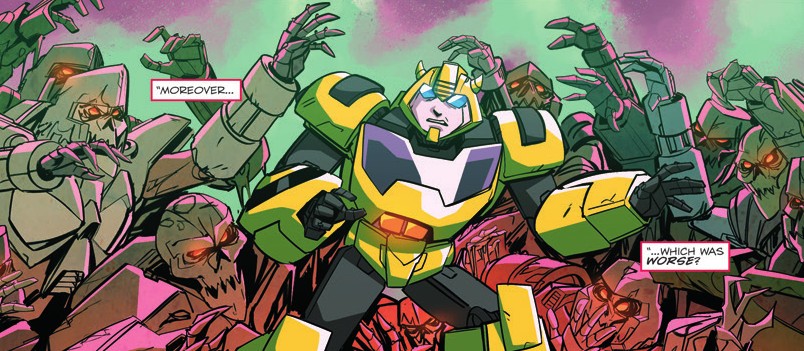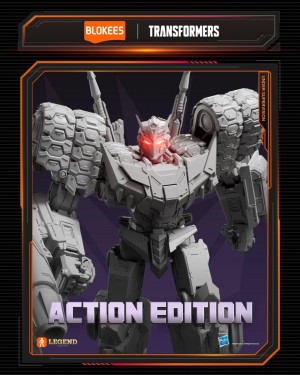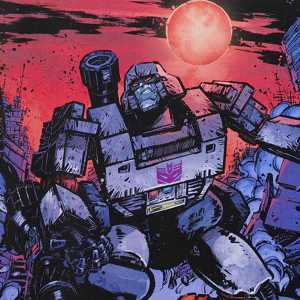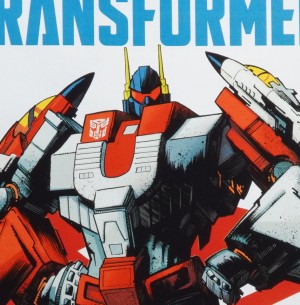Love, Life, and Death
(Spoiler free-ish)
(Spoiler free-ish)
Synopsis
GHOST STORIES! Optimus Prime returns to Cybertron—only to be confronted by his rival for the Matrix, Pyra Magna! As Pyra's origin—before she was part of Victorion—is finally revealed, Optimus relives his own past—the first time he met Bumblebee!
Story
How do you take an annual publication, make it not an annual occurrence, and still deliver one of the best stories of the past months (and that's saying a lot, given the competition in all three current ongoings!) - give it to IDW, have John Barber channel his best Continuity editorial essence, and some of Mairghread Scott's devious writing tendencies (and penchant for poetry). Welcome to Ghost Stories.
As is customary with Barber, we have a narrative frame in the form of Starscream eavesdropping on Optimus and Pyra Magna visiting the epilogue of Dark Cybertron, and the singularity left behind by Shockwave's plan. Three leaders, three contenders to power, three ideologies: the soldier, the enforcer, the manipulator - all reluctant at some point, all connected to the power of belief. All no longer as clearly distinct.
The first of the two centres on Bumblebee, and Orion Pax's first interaction with him in the early days - with a fitting crossover with Barber's own Optimus Prime series - some excellently prickish Prowl, some fantastic cameos (you can find them all in our database entry) and returns to the page for old friends and enemies, and some insight into the actual power and skills of the little bug that could (until he couldn't ded).
The second, narrated by Pyra, is the origin of the current team of Torchbearers, before Cybertron, before Victorion, before the change of heart towards the Mistress of Flame and her beliefs. And it is a gem of Transformers world building and characterisation, giving us stories fleshing out Pyra's motivations, background on Dust Up and Jumpstream, some touching Rust Dust moments and world shattering implications suddenly made explicit.
Art
Priscilla Tramontano, not a stranger to the TFverse, is the sole artist for the lengthy book, and she does wonders with her own style fitting the two tales - Bumblebee's in particular, with the younger narrative fitting the almost Animated-esque nods - but also the general frame of the Annual. Even in the freshness, the darker, more sombre panels and sequences are not diminished or made grotesque, either, and the emotional tones are sustained throughout.
With three stories running through the book, the creative team made a nice choice of gathering multiple colourists too, one per section - or so we're told, at least, as Thomas Deer, JP Bove, and Josh Perez work so well and in sync with each other and the art that it's actually almost impossible to tell where transitions happen and who did what. I am utterly amazed, but not surprised, at their tripartite skill.
On the lettering front, we see the return of another older name on the books, Chris Mowry - who deftly delivers the captions and sounds to the narrative, and some eerily good title fonts too. While Tramontano delivers a gorgeous main cover for the book, the thumbnailed art comes from the variant done by Andrew Griffith and Josh Perez, taking an OP ongoing vibe, and some of Starscream's gun fetish along for the ride.
Thoughts
Spoilerish ahead
Reader, I loved it. I really did. The book does so many things right, and the ones it doesn't are easily overlooked (the placing in timeline (ScottyP suggests between Optimus Prime 6 and 7). It brings us more information on so many characters, gives added relevance to Bumblebee in the wider scheme of things - though currently without obvious repercussions... for now - plays really nicely with continuity issues, and gives us the first openly canonic f/f relationship in the IDWverse, by elaborating a single line all the way from Combiner Hunters!
What really impressed me the most, other than the entirety of the Torchbearers story, was the way in which the visual team of four, no, five people worked together to bring the right setting, tones, nuances, palettes, spectrums to the different threads running through the book - there are some thicker inks than maybe required in some panels, but the colours offset them; there are so many good compositions to choose from, and different layouts tried in the narratives, and there is so much to discover in the ramifications of it all. From here on, everything is going to be quite a ride.
. 



 - out of
- out of 






